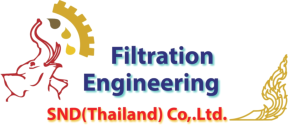Call Us Today : Hotline : 086-986-1552, or 02-929-5703
Email : snd.thailand@gmail.com
Line ID : nartthawat , Skype : nartthawat






What is passivation of stainless steel base on “ASTM - A380”
Passivation is a widely-used metal finishing process to prevent corrosion. In stainless steel, the passivation process uses nitric acid or citric acid to remove free iron
from the surface of stainless Steel. The chemical treatment leads to a protective oxide layer that is less likely to chemically react with air and cause corrosion, then metal
without Fe+ is Passivated stainless steel resists from oxidation reaction can cause Rusty.
To removal of exogenous iron or iron compounds from the surface of a stainless steel by means of a chemical dissolution, most typically by a treatment with an acid
solution that will remove the surface contamination but will not significantly affect the stainless steel itself … for the purpose of enhancing the spontaneous formation of the
protective passive film.
How does passivation work?
Stainless steel is an iron-based alloy, typically composed of iron, nickel and chromium. Stainless steel derives its corrosion-resistant properties from the chromium
content. Chromium, when exposed to oxygen (air), forms a thin film of chromium oxide that covers the stainless steel surface and protects the underlying iron from
rusting. The purpose of passivation is to augment and optimize formation of the chromium oxide layer.
Immersion of stainless steel in an acid bath dissolves free iron from the surface while leaving the chromium intact. The acid chemically removes the free iron,
leaving behind a uniform surface with a higher proportion of chromium than the underlying material.
Upon exposure to oxygen in the air after the acid bath, the stainless steel forms the chromic oxide layer over the next 24 to 48 hours. The higher proportion of
chromium at the surface allows for the formation of a thicker, more protective chromium oxide layer. Removal of free iron from the surface removes opportunities for
corrosion to start.
The resulting passive layer provides a chemically non-reactive surface that protects against rust.

https://www.besttechnologyinc.com/passivation-systems/what-is-passivation/
















